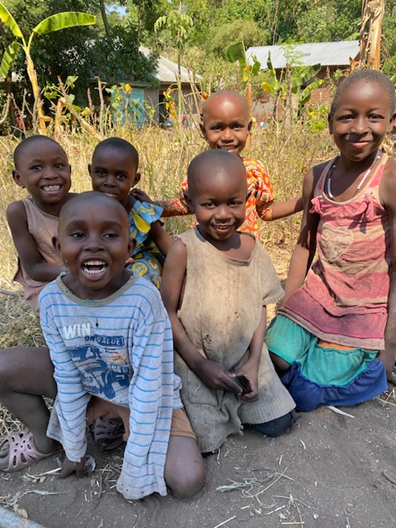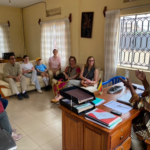In 2016 an idea sprouted at a strategy meeting in India…orphanages struggle with professional nutrition examination of their children. This is because of multiple competing priorities coupled with how incredibly hard it is to develop sustainable giving programs…clothes, shoes, shelter, food, healthcare, education and the list goes on. With so little in annual income, how is it even possible to bring in a nutritionist?
We asked a number of orphanage owners and found the need is great. Orphanages usually start with a person’s heart connection for helping kids. Friends and family funding kicks off the new program but it can only go so far. The founder may not have formal training or may have expertise in some but not all of the areas that underly orphanage management. The venture takes root and then what follows is an annual struggle for funds.

Thus in 2017, GlobalRise was started with the idea that we can help.
Farm-to-Plate Protocol was developed for orphanage management to bring good nutrition into their residential homes or orphanages. It takes a broad, community perspective including local infrastructure, sanitation, food availability via local farming and much more – and then boils that down to how to create a nutrient-rich food systems environment at the orphanage level.
Materials were created with the orphan and orphanage needs in mind. For example, a graphically-oriented hand washing poster was created that can help keep the importance of this activity in mind. A skills assessment program for kitchen staff was created that can be used to help in hiring chefs that can help kids eat better…and much more.
The program was first implemented at Christalis Home in Kasese, Uganda, by a professional nutritionist and an agronomist/public health expert. Their existing food system was evaluated including food preparation and storage, the kitchen, washing of utensils and more. As you can see from the photos we took time to remove smoke from the kitchen. As soon as we walked in we were crying! This involved an infrastructure project developed by a local engineer.
We also took a hard look at the food budget. We wanted to make sure that the nutrient requirements of the orphanage population were being met with food purchases. Of course this also included a thorough review of food preparations and diet preferences. As we reviewed the food budget it became necessary to visit the farmer’s market, document and track food prices, food types during different seasons and so forth. All of this, the work of the nutritionist, is required to finally build a nutritious weekly menu. The menu drives food purchases, preparations and services for the children.

Farming is also part of this analysis. If the orphanage has land, raising crops can help to reduce operating costs attributable to food. Our agronomist went to work on this part of the equation, reviewing the existing farm, its capacity (both in terms of arable land, local and reliable talent that could be hired, build out costs and more). In the final analysis at Christalis Home, we opted for changing the food budget versus supporting the cost to build a new farm. Some items are sourced from the farm even today from this effort but because the Kasese farmer’s market is so robust and active, we found that food availability and costs were quite favorable.
Today, we visit the orphanage once a year to maintain our farm-to-plate protocol. Much of the initial changes are now operationalized. We offer help with the nutritional aspect of baby onboarding (initial assessment), reviewing baby formulas and, with the help of a pediatrician on our advisory board, providing clinical observations. Use of digital health records provided by PocketPatientMD helps with continuity of care for the precious kids.
Finally, whenever we want to implement a change we create what we call “funded recommendations” for orphanage management and/or board-level review. Approval of the recommendations by management then leads to implementation to transform the orphanage food system. Our donors fund the recommendations thus removing this burden.

Unfortunately GlobalRise is not able to help every orphanage that reaches out to us. We have an overriding vision – Digital Food Systems – that drives the location of our work. This is because we believe that we can help the greatest number of kids by implementing digital food systems. Our work at the orphanage level is symbiotic and helps us to leap frog learnings of the local food system dynamics. This helps us to understand how to position our technology and expertise to raise the level of nutrition in areas of high stunting.
Today we are targeting Subsaharan Africa, India and Guatemala. This is because these areas have high stunting zones. Subsaharan Africa is the only region in the world where the stunting rate is increasing. India hosts the most stunted children on the planet. And Guatemala – its western highlands like Heuhuetenango – has one of the highest rates of stunting with 70% being recorded by USAID.
Our journey is just beginning…but we need your help!
Consider becoming a nutri-ambassador with GlobalRise and joining us as we build A World of Healthy Kids!
Check Out Our Other Recent Blogs:
- Good Nutrition in IndiaAfter working for 3 months in the Rwenzori Mountains of western Uganda building a community nutrition program, our team traveled to another mountainous jungle 7,040 … Read more
- Group Visit During Mission 2022Global health leaders roll up their sleeves to help Ugandans and to understand their challenges from Kampala to Kisoro.
- University InaugurationAs part of the Digital Food System, GlobalRise seeks to build a Center for knowledge transfer and workforce training at the University. This will ensure that local people are trained to manage the food system.
- Meet Emmanuel and Michael!Emmanuel and Michael are offering unyielding commitment and support to the people of Kasese.
- Community Nutrition: Armed with Knowledge and Tools, Kasese Families are Fighting BackDiscover how families in the Rwenzori region are fighting back against childhood malnutrition.






